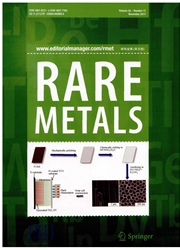

 中文摘要:
中文摘要:
在一个典型过程,低碳钢在二不同温度被退火(660
 英文摘要:
英文摘要:
In a typical process, low carbon steel was annealed at two different temperatures (660℃ and 750℃), and then was temper rolled to improve the mechanical properties. Pre-straining and baking treatments were subsequently carried out to measure the bake-hardening (BH) values. The influences of annealing temperature and temper rolling on the BH behavior of the steel were investigated. The results indicated that the microstructure evolution during temper rolling was related to carbon atoms and dislocations. After an apparent increase, the BH value of the steel significantly decreased when the temper rolling reduction was increased from 0%to 5%. This was attributed to the increase in solute carbon concentration and dislocation density. The maximum BH values of the steel annealed at 660℃ and 750℃ were 80 MPa and 89 MPa at the reductions of 3%and 4%, respectively. Moreover, increasing the annealing temperature from 660 to 750℃ resulted in an ob-vious increase in the BH value due to carbide dissolution.
 同期刊论文项目
同期刊论文项目
 同项目期刊论文
同项目期刊论文
 期刊信息
期刊信息
